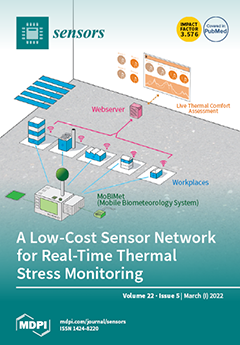We report a breath hydrogen analyzer based on Pd-coated SnO
2 nanorods (Pd-SnO
2 NRs) sensor integrated into a miniaturized gas chromatography (GC) column. The device can measure a wide range of hydrogen (1–100 ppm), within 100 s, using a small volume of
[...] Read more.
We report a breath hydrogen analyzer based on Pd-coated SnO
2 nanorods (Pd-SnO
2 NRs) sensor integrated into a miniaturized gas chromatography (GC) column. The device can measure a wide range of hydrogen (1–100 ppm), within 100 s, using a small volume of human breath (1 mL) without pre-concentration. Especially, the mini-GC integrated with Pd-SnO
2 NRs can detect 1 ppm of H
2, as a lower detection limit, at a low operating temperature of 152 °C. Furthermore, when the breath hydrogen analyzer was exposed to a mixture of interfering gases, such as carbon dioxide, nitrogen, methane, and acetone, it was found to be capable of selectively detecting only H
2. We found that the Pd-SnO
2 NRs were superior to other semiconducting metal oxides that lack selectivity in H
2 detection. Our study reveals that the Pd-SnO
2 NRs integrated into the mini-GC device can be utilized in breath hydrogen analyzers to rapidly and accurately detect hydrogen due to its high selectivity and sensitivity.
Full article






